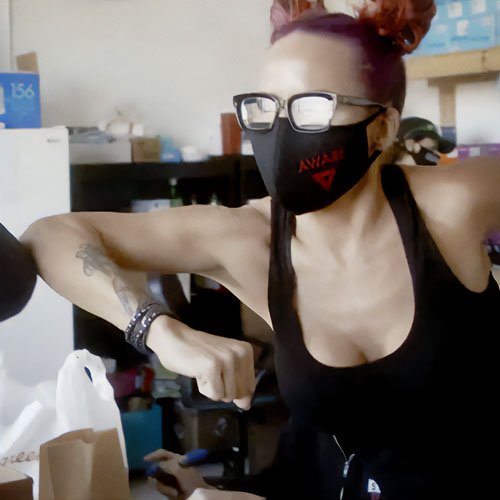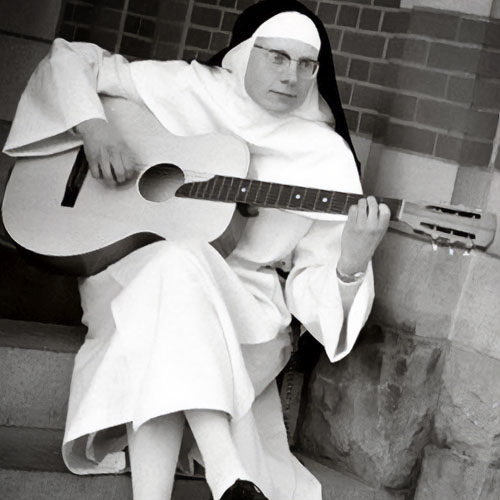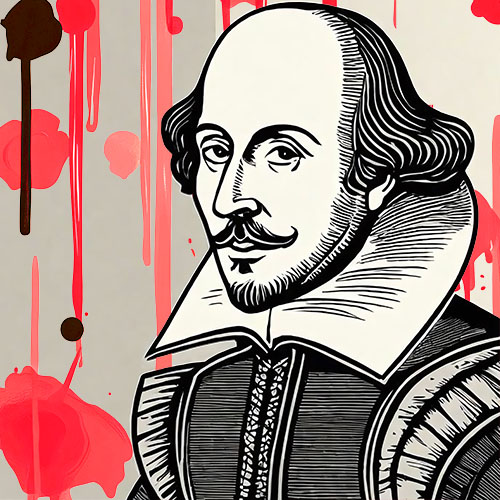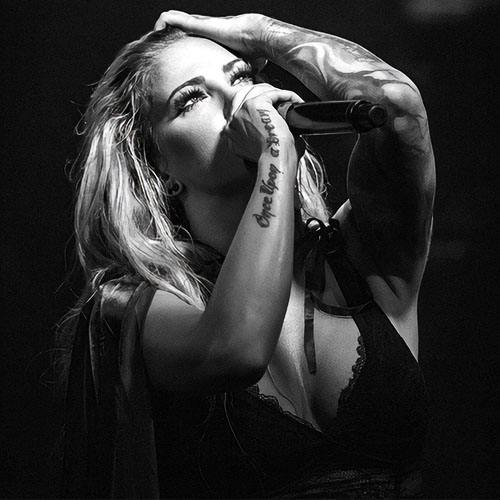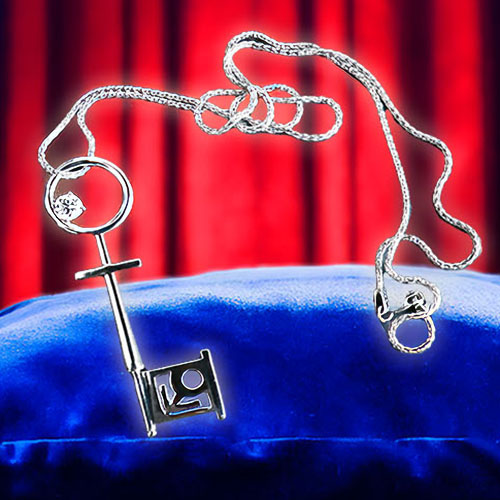Before his fall, Don Diva founder Kevin Chiles soared high in the eighties drug game.
Legendary Harlem hustler Kevin Chiles rose to prominence during the 1980s crack era. Busted at the height of the U.S. government’s “War on Drugs” in the early nineties, Chiles took the feds to trial twice. When the juries couldn’t reach decisions, mistrials were declared. But with federal prosecutors escalating their targeting of family and friends, Chiles eventually pleaded out to a ten-year sentence and was sent to prison to do his time.
It was during his incarceration years, in the belly of the beast, that Chiles founded Don Diva magazine, the outlaw’s bible.
Every issue features stories on infamous gangsters and street figures from the urban underworld. After getting locked up, Chiles could have rested on his street cred and let his legend reverberate through the chronicles of hip-hop lore. But he’s always been driven, and once he got his idea, he vowed to make Don Diva happen.
The magazine’s twist is that it interviews its subjects — many of them serving life sentences for their crimes — straight from the penitentiary. Its writers uncover stories you don’t see in mainstream news outlets, and Don Diva has an insider understanding of the world it chronicles. Chiles got out of prison in January 2004, and the magazine he founded from a cell block 20 years ago is still going strong.
Chiles and his wife Tiffany, who’s helped him run Don Diva since the start, have turned their enterprise into a thriving lifestyle brand complete with a highly trafficked website, a clothing line, DVDs, concert promotions, and books. The quarterly publication itself has been featured in the Washington Post, New York Times, VICE, and Huffington Post.
Penthouse sat down with Chiles to find out just how big he got during the eighties, who his contemporaries were, and what the Harlem drug-game was like back then. We also wanted to hear about his experience being thrown into the criminal justice machinery, his time in federal prison, and the tragic way his own mother got caught up in the chaos — subjects he’s retraced in a book he recently wrote about his life, called The Crack Era: The Rise, Fall & Redemption of Kevin Chiles.
What was it like growing up in the Bronx?
The Bronx is the birthplace of hip-hop. But prior to every urban kid having dreams of escaping the ’hood using two turntables and a microphone, most aspired to leave through hoop dreams or selling drugs. It didn’t feel like there were many other options available. In 1975, New York City was facing an economic crisis — it was nearly bankrupt. Basic city services like garbage pickup were suspended. You can only imagine how much less urgent it was for the city to address issues in predominantly black and Hispanic areas. Much of the Bronx was dilapidated, with burned-out, abandoned buildings. High crime rates made it feel like the concrete jungle was in irreversible decline. The hopelessness many New Yorkers felt was exponentially greater in forgotten areas like the Bronx,Harlem, and much of Brooklyn.
You were out there working, hustling, early on, right?
I started packing grocery bags around the age often in the local supermarket. I also offeredto carry bags for women and older people up to the tenements. I may have only made $20 to $30 dollars on weekends, but that money I gave my mom really made a difference, particularly when it came to food.One of my next hustles was selling and delivering the Sunday newspaper. I would buy a stack, sell them, then run back and buy more as needed. Sometimes, I was lucky enough to occasionallyswipe some if I caught the truck dropping them off early in the morning. My little contributions were helping, whichmeant my mother no longer had to ask for credit as often from the corner store. I also had a few bucks in my pocket for the first time, and I liked it.
You eventually started hustling drugs. What was it like at your peak?
For several years, I was netting around $300K weekly, with the bulk of the money coming from D.C., and the rest from New York. I was in my early twenties and you really couldn’t tell me anything. Everyone down with me was getting real money, living in homes and condos, driving luxury cars, rocking the latest fashions and jewels, living the high life. They were all bosses in their own rights. The crack generation got rid of all drug protocol. Previously, you had the manufacturers of heroin in Asia essentially going through wholesale distributors, aka the Italian Mafia. The Mafia had established distribution centers and retailers — aka the urban blacks they worked with.
Cocaine distribution initially started out the same. However, as Colombian drug cartels started to see America’s appetite for cocaine and expanded the market — initially through Dominicans — at some point they realized they didn’t need the Mafia to distribute its products. They needed us, in our neighborhoods, as much as we needed them, and that protocol and pipeline that had dictated how drugs were essentially distributed in America was gone. If you lived on a block, you could open up shop.It was like a flea market.
Who were your contemporaries back then?
When I first started there were a few crews in Harlem that held the top spot, including one led by Azie Faison. In 1987, Azie was shot and nearly killed, and effectively out of the game. Rich Porter and Alpo were also contemporaries. Crusader Rob and the Rutledge brothers were affiliated with me. Billy Guy was someone I knew growing up in the Bronx who attained kingpin status in Baltimore in the heroin trade.
I wasn’t limited to Harlem. My time in Washington, D.C., paralleled and then exceeded Rayful Edmond’s. I was in one part of town, the Southeast, while he was in the Northeast. Other New York City contemporaries included Supreme and Fat Cat in Queens, Domencio Benson in Brooklyn, and Fritz, who was known as the Consignment King.
What else can you say about the late-eighties drug game?
Initially, things were great in Harlem. It was young guys hustling, posturing for the top spot, motivated as much by taking care of our families as we were by getting girls and having fun. Unfortunately, a madness overtook the less than four square miles that make up Harlem. The limited territory eventually led to battles over real estate. Cats getting money were increasingly having to defend themselves against stickup crews and kidnappers. Groups like Preacher’s Crew, Young Guns, and the Lynch Mob had a reputation for robbing, killing, and extorting, as well as drug dealing. Those crews sometimes became targets, too.
Selling drugs on a major level was essentially a full-time gig, and when you were committed to everything else that came with the fast pace of living the life, most of us did not see beyond the immediate. We lived our lives in dog years. To say it was fast-paced probably undersells the drama and events one day could hold. Add to that the fact that our lives, our freedom in the streets, had such a short-term expectancy and you could further understand why so many in my generation never planned for the future. This included not buying real estate and establishing legitimate businesses.
All that money, competition, limited turf — what did it do to the scene?
It created anarchy, renegades, and increased drama. Violence, kidnapping, and murders always existed in the drug game, but back in the day, with Nicky Barnes, Guy Fisher, and even my uncle, people knew they were robbing an organization. Within those organizations, the Mafia was usually seen as a party determined to protect its distribution network. So guys had to pick and choose who to rob or they would face immediate consequences.
Once that order was gone, it was a lot easier to rob individuals. There were no rules, and the younger generation and up-and-coming hustlers didn’t really fear the repercussions. It was like Lord of the Flies on steroids.
The increasingly violent environment effectively lead to a type of arms race, where having the most guns, and the biggest guns, along with a big crew, was deemed to serve as a form of deterrence. We took arming ourselves to excessive heights. Our stash houses were stockpiled with so many weapons and body armor you might have thought we were a private militia training to overthrow a Central American nation. Every day, we prepared to fight. The enemy may have even been unknown, but the playing field had become so deadly and unpredictable that you were forced to adapt or fall prey to it.
Can you talk about what happened with your mother?
My mother, Barbara Chiles, along with two other women, Rita Faulk and Sarray Watson, were all tied and bound, before being shot in the head. Sarray was the only survivor. Sarray was visiting Rita Faulk in the Fordham Road section of the Bronx. As she was coming out of a building, she and Rita were accosted by three guys with guns. They took them back into the building and up to the roof and robbed them of all their jewelry and money. But the robbers weren’t done. They piled into Sarray’s car and another car followed them. She directed them to my mother’s place. They waited for my mother to arrive home from work, and once she did, they used Sarray to access my mother’s apartment.
My mother was killed by cowards. If they wanted me, I wasn’t hard to find. I was usually at my store, BOSS Sneakers, on 125th Street in Harlem. There was neither money nor drugs in my mom’s house. These cowards shot three women, murdering two in cold blood. Two beautiful souls died, literally for nothing. My mother’s murder was another loud declaration that we were dealing with a different kind of savage in the crack era, who followed no rules or code of ethics. Maybe I’d watched too many Mafia movies in my life, but civilians — women, children, and families — were supposed to be left out of our affairs. As for my emotions, they were overwhelming and contradictory.
Sadness and despair were being drowned out by rage, mixed in with guilt and remorse. I felt responsible for what happened. I wanted blood on my hands and needed vengeance. I wasn’t thinking rationally. I know I attended her wake, but I don’t have any distinct memories of being there, talking to anyone, or taking part in any of its planning. Revenge was the only planning I can even recall because I was in a daze, mixed with denial. Having someone you love taken from you violently is even harder than other forms of death, like disease, accident, etc. None of it is easy, but people taken from you prematurely and violently carries a different kind of burden and pain.
What happened to the killers?
I had the word out and endless resources in place to locate these individuals. Shortly after the murders, I received news
that they fled the city. My searching for them never ceased, even as the incident and the offenders were featured on America’s Most Wanted.
Two of them were apprehended by law enforcement. At some point, I got word the third coward was deceased, but I have no idea of the circumstances behind his death. I didn’t attend or participate in the trials, but I knew they were convicted and sentenced to 60-plus years for each murder, to run consecutively. Many may have taken solace in some form of justice taking place. That wasn’t the case for me. Nothing would have denoted justice for the loss, and the only thing that would have taken even a distant second was me as judge, jury, and executioner.
How did the flow of drug profits into Harlem’s economy change life for residents?
The positive economic effects of the era extended well beyond people being able to buy boosted goods at a discount, or purchase TVs and VCRs on the cheap from a crackhead. There were families being fed and clothed. There were people that never had cars or taken a trip finally having the means and opportunity. Much of the money was contained and spent in the ’hood. Grocery stores, cleaners, restaurants, car washes, clothing stores, barber shops, and beauty shops flourished. None of us ever benefited from any trickle-down effects of Reaganomics, but the community definitely benefited from the money being made and spent from the crack trade.
The money was intoxicating. And while it came with a price, none of us were going to turn it down. Once the violence started becoming a regular thing, me and my crew began not only carrying weapons at all times, but wearing bulletproof vests and sometimes even bulletproof hats as well. Instead of changing our mind-set and environment, we just adapted to the madness. We would rather have been caught with our weapons than without. With my crew, there was a true structure with order and a hierarchy. We moved in precision and with a purpose. One for all, all for one.
We were a tight, insulated group, and this is what increased our chances of staying safe from foes, as well as from law enforcement. There was a true bond, a real brotherhood. We were willing to give and risk our lives for one another — we were each our brother’s keeper.
There were a bunch of warring factions during this time as well. Many of those at war had at one time been really close friends and down with each other before beefing. The fallout and deaths from the various wars within our world helped define the landscape of that era.
How’d you get busted, and what happened after that?
It was November 1994. When I was arrested, I was on the cusp of signing a major distribution deal for my music company, BOSS Records. I had quit hustling two years prior, and though I knew I was being followed, I did not overly worry about any investigation since all my energies were directed toward my numerous legitimate businesses. Nonetheless, the government wasn’t going to let me go in peace. I was arrested under the federal kingpin statutes, which held mandatory life sentences. But I was more surprised that the vast majority of my 21 codefendants were family members who had no drug ties, and not the numerous others who I had done actual business with over the years.
 Chiles and his mother Barbara at his high school graduation, 1984
Chiles and his mother Barbara at his high school graduation, 1984
Over the course of a two-year investigation and more than 8,500 taped conversations, my arrest did not include one piece of evidence that suggested I was selling drugs. However, the charges against so many of my family members and acquaintances showed me the government’s strategy. They were trying to force a plea or cooperation from me with the threat of incarcerating my loved ones, despite the fact that they never had any role in the drug game other than benefiting from my generosity. Despite these threats, I took two cases to trial, where both resulted in mistrials: eight-four and ten-two in my favor. When it was all said and done, I was sentenced to 120 months.
As much as I was reluctant to take the plea for ten years, I have to admit that once it was done, I actually felt relieved.
Can you elaborate on this reaction?
Fighting for my liberty every day for nearly three years, while also trying to keep my immediate family out of jail and continue to financially support my women and kids, was exhausting. I was on a roller coaster of emotions with every small victory countered by a devastating setback. The plea wasn’t the resolution I had hoped for, but at least it meant the uncertainty was over. I’d grown wiser during the process. I could never be the old me. I’d gotten a front-row seat to racism and classism, and how power affects policy and all of our lives. Systemic injustices aren’t just catchphrases used by civil rights leaders and militants, they’re part of the everyday fabric for people of color.
It was clear to me the government didn’t play fair. Since I took a plea, it allowed the government to seize the money, stocks, insurance policies, jewelry, cars, and my house, which they wouldn’t have otherwise been able to. It was clear all the government wanted were convictions. I was initially labeled a “kingpin,” but I ended up pleading out to possession and the sale of seven kilos of coke with no codefendants. I treated jail like it was my last two years of high school. I was simply doing what I had to do. The wants were the same, which was ultimately getting the fuck out and getting back to the streets.
Clearly, I was no longer a teenager doing teenage things, but this was probably the first time since high school I was forced to do things I did not want to. I really looked at jail as something I needed to just get through until I could resume life again.A year after my plea, I went from a low-security facility to a federal camp. My time in the low-security facility was mostly uneventful. However, when they sent me to the camp, it was like putting a fox in the chicken coop. Camp had so many less restrictions that it actually opened up a whole new set of issues for me, because it was clearly in my nature to fully exploit these circumstances. My instincts and nature led to acommissary hustle that netted anywhere from $1,000 to $2,500 a week. Additionally, while conjugal visits were not permitted, my youngest was conceived while I was at the camp. I have alwaysfound a way to match my will.
What are you doing now, and what are your future plans?
Nearly two years ago, I did an interview with Funkmaster Flex on one of the biggest radio shows in the country, Hot 97 in New York. A friend and attorney subsequently reached out. I’d previously discussed doing a book project on my life, but I never felt comfortable with the timing. With some initial reluctance, I began writing The Crack Era: The Rise, Fall & Redemption of Kevin Chiles. The book became a labor of love and therapy, one I’m proud to have the chance to share with the public. Its completion coincides with the Don Diva twentieth anniversary. The book’s release, potential TV deals, and other opportunities are the culmination of many years and hard work, and I’m excited about this next chapter in my journey.
Seth Ferranti is a former federal prisoner whose writings have been featured on VICE, Don Diva, and Gorilla Convict. He’s also the author of the crime series Street Legends, and the comic series Crime Comix.
















